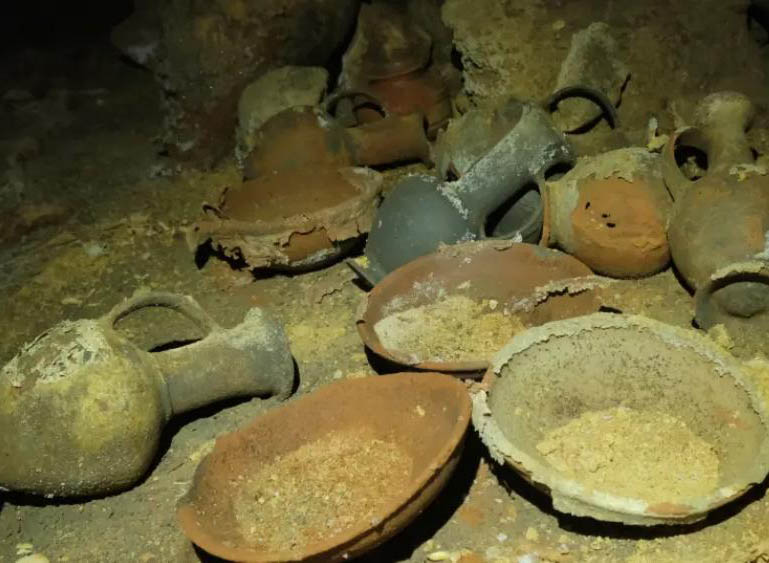The cave of Ramses II
Publish date 30-12-2022

"This is a once-in-a-lifetime discovery."
This is how archaeologist Eli Yannai defined the discovery, near Tel Aviv, of an intact cave belonging to the period of Ramses II. Some workers, who were carrying out construction work in Palmahim Beach National Park, penetrated the ceiling of a burial cave, which had been sealed for millennia.
The archaeologists of the Israel Antiquity Authority, who arrived on site and descended into the cavity with a ladder, carried out an initial reconnaissance of the materials present and hypothesized the dating. Among the objects deposited in the cave there are ceramic containers, such as bowls, some decorated with red paint, glasses, pots for cooking food, jars for storing foodstuffs and oil lamps.
There were also bronze objects, such as some arrowheads which, given their position, were perhaps formerly contained in a non-preserved quiver of organic material. These objects are often associated with funerary contexts, but it is not yet clear whether human remains or inscriptions have been found that can shed light on the presence and identity of a deceased.
Based on the shape, composition and decoration of the materials, archaeologists date the find to the time of the Egyptian pharaoh Ramses, i.e. to the 13th century. B.C. In this period, the pharaoh's realm extended from Sudan to modern Syria, also including present-day Israel.
Not all the objects found in the cave have local origins, but some also come from Lebanon, Syria and Cyprus, testifying to the commercial power of the Egyptian kingdom in this period.
Finds of this type, i.e. burial contexts not looted in antiquity, are very rare and archaeologists hope to extract as much information as possible from the cave. It will be interesting, for example, to carefully analyze the traces of organic remains found inside the ceramic containers. According to archaeologists, the cave, which is now guarded and controlled to avoid looting by modern grave robbers, will shed light on the burial practices of the Bronze Age.
Agnes Peak
NP October 2022







